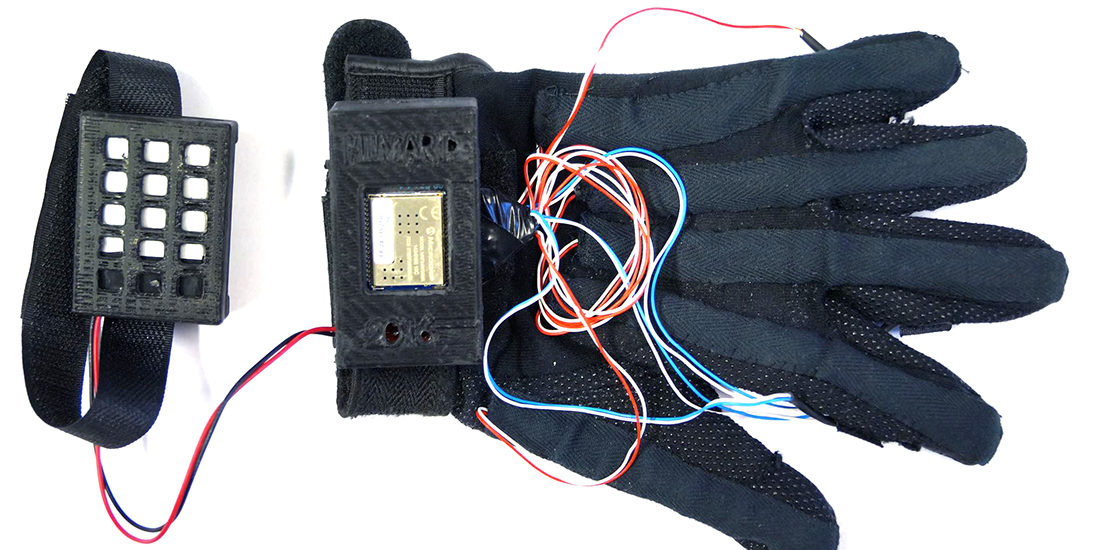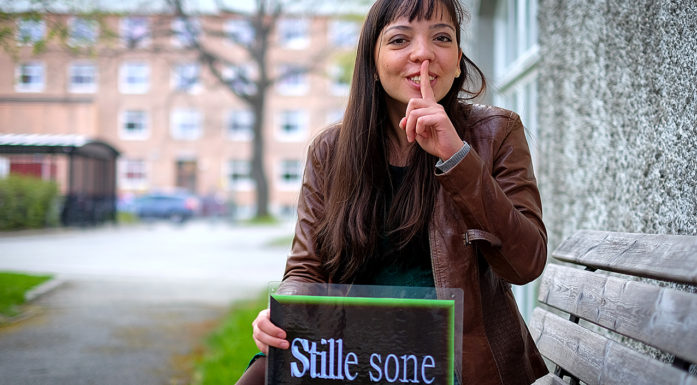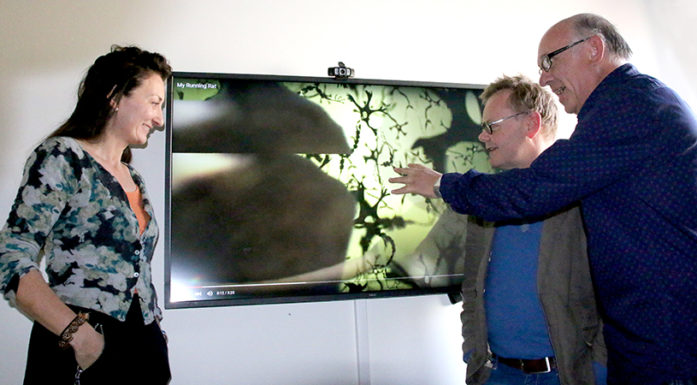Digital glove returns control to conductor
A digital glove crafted by an Icelandic conductor/composer allows composers to combine electronic music with regular instruments.
Hilmar Thordarson’s musical career has spanned his homeland of Iceland, brought him to the Yale School of Music and now to his position at the Norwegian University of Science and Technology (NTNU).
He’s always been intrigued by the interplay between electronic music and orchestral music. Now, he’s combined these two interests with technology in the form of a lost glove, which he transformed into a digital glove for conducting.
When Thordarson moves his gloved hand, the control panel of his computer responds. The volume grows and subsides. A program opens and closes. Sounds replay from the beginning.
“I found the glove on the street and decided to give it a new life. It’s being recycled, in a way,” Thordarson chuckles.
The previously lost glove is now equipped with wires, buttons and sensors. It has an accelerometer, a gyrometer and a magnetometer, which allow the glove to detect various movements. It’s wireless too, and has been named the “ConGlove” or Conducting Glove.
The glove is part of a “ConDiS” (Conducting Digital System) that Thordarson has created for writing and performing mixed music.
Human takes over
Composer Thordarson has been combining music for both acoustic instruments and computers for a long time. But one problem with “mixed music” has been that the computer has controlled the performances – from tempo to volume – because it hasn’t been practically possible for the conductor to adjust the electronic part during a piece.
Thordarson has tackled the issue by using the glove to return control of electronic music to the human conductor.
With the new digital glove, the conductor can regulate the volume, control the tempo, pause, stop and replay sections.
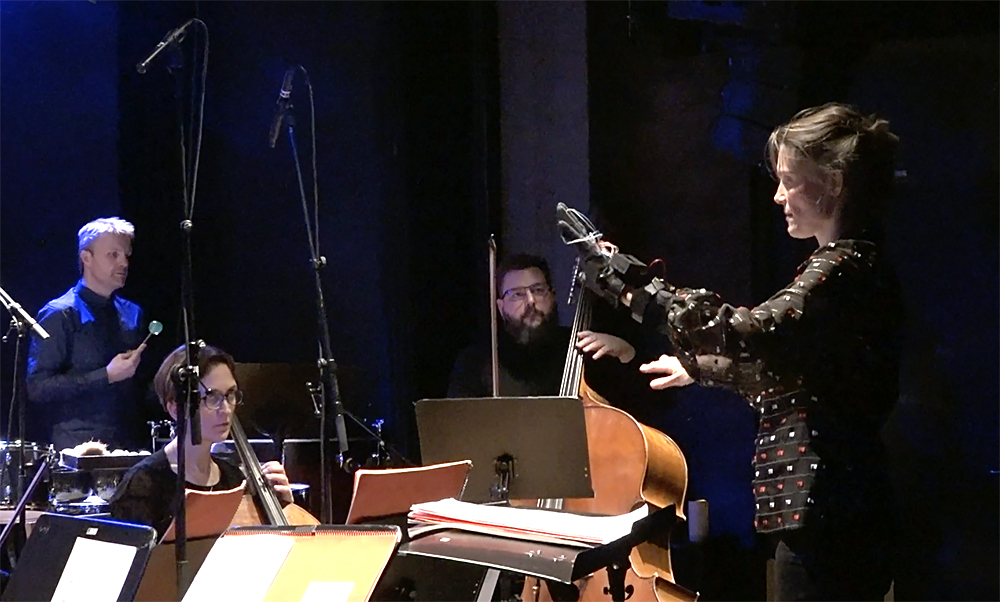
Thordarson’s compositions have been performed several times by conductor Halldis Rønning and the Trondheim Sinfonietta.
In short, the glove is a prototype, and it’s working as expected in the studios of NTNU’s Department of Music, where Thordarson is a PhD candidate.
An opening in the air
The glove has proven itself in other settings as well.
Thordarson has composed two pieces of music where the glove is used. One is the choral work “Silence I ask – Hljóðs bið ek.” The second is “Kuuki no Sukima,” which means “an opening in the air” or “between the air” in Japanese.
These are not merely demonstration pieces to show off the features of the glove. The goal is rather to make the glove a natural, and almost invisible, part of the performance and experience.
Thordarson sees his music as largely about exploring new sounds. Kuuki no Sukima has been performed several times by conductor Halldis Rønning and the Trondheim Sinfonietta, who are skilled enough to tackle the task.
“It’s a difficult piece,” says Thordarson.
And this is intentional. He wants to test the boundaries and possibilities of combining human and computer to see how far he can go. It may take time to learn how to use the glove, but more advanced features can be added over time.
Conductor on board
Thordarson has some familiarity with conducting, which is what he started out doing. But collaborating with Rønning has been important for the design of the glove.
“It’s been exciting to explore a pilot project like this and see what opportunities exist. I see lots of potential here. Maybe for multimedia, too,” says Rønning.
She thinks the glove, in its current form, shines most when used with partially improvised music and when the wearer has a lot of freedom in shaping the sound image.
Rønning has influenced which movements are most convenient for performing various tasks. If you make a fist with your hand, you can adjust the volume by moving your arm up and down.
Four fingers each have their own button, and different combinations give the conductor the power to start over completely, turn off or pause the sound, or regulate the pace. But they haven’t worked through all the kinks yet.
A practical example is that Rønning normally uses her left hand – the gloved one – to scroll through the score. Placing the score on a larger e-reader instead, or applying something tacky to a gloved finger are two possible ways to make it easier to turn the pages on a regular score.
“I’ve noticed that when Thordarson wears the glove, he uses different functions than I do,” says Rønning.
She has no objection to continuing the collaboration. But she would prefer to use more artistic features than purely technical ones like controlling the volume and starting and stopping sounds.
Rønning notes that Thordarson uses more artistic features when he conducts his choral piece. This work is differently constructed than Kuuki no Sukima, which has no room for more features.
But, Rønning says, “Kuuki No Sukima isn’t just a technical idea – it’s a beautiful piece of art.”
Instruments become digital sound
“I wanted to expand the sound of the classical instruments and make it richer,” says Thordarson.
The usual instruments become the basis for the sounds that the computer produces during the performance of Kuuki no Sukima. When an instrument plays, the sound is fed into the computer. From there the sound from the instruments is processed and sent back in another form.
A performance makes great demands on precision.
“Synchronizing the score, the electronic sound and the sound’s location in the performance hall is absolutely central,” says Thordarson.
Article continues below photo.
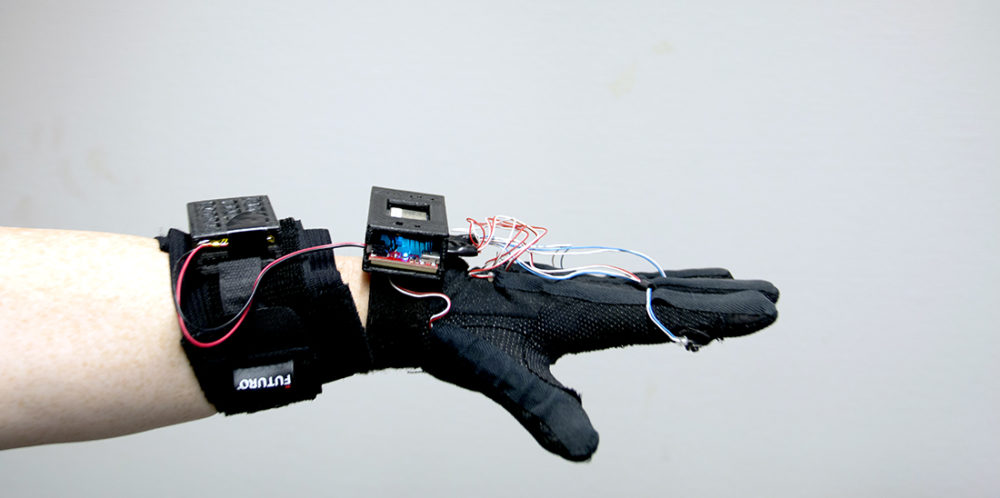
With the new digital glove, the conductor can regulate the volume, control the tempo, and pause, stop or replay the sound. Photo: Steinar Brandslet, NTNU
Thordarson included detailed instructions in the conductor’s score, specifying exactly when and which instruments play, what they play, changes in the electronic sound and how the sound moves in the surroundings. He entered his own characters for which functions of the glove were to be used throughout the piece.
Thordarson isn’t a programmer. Music is what he knows best, but he has learned programming anyway, and has used aids like Max/MSP, Max for Live and Ableton Live.
He also shares inspiration with the student company Arveng Technologies, which works with a similar glove to control drones. Thordarson has been assisted by his advisor Professor Øyvind Brandtsegg and Notam, a Norwegian centre for the development and innovative use of technology in music and art.
“Now my dream is to compose an opera that uses this glove,” says Thordarson. That dream may still be a bit in the future.
